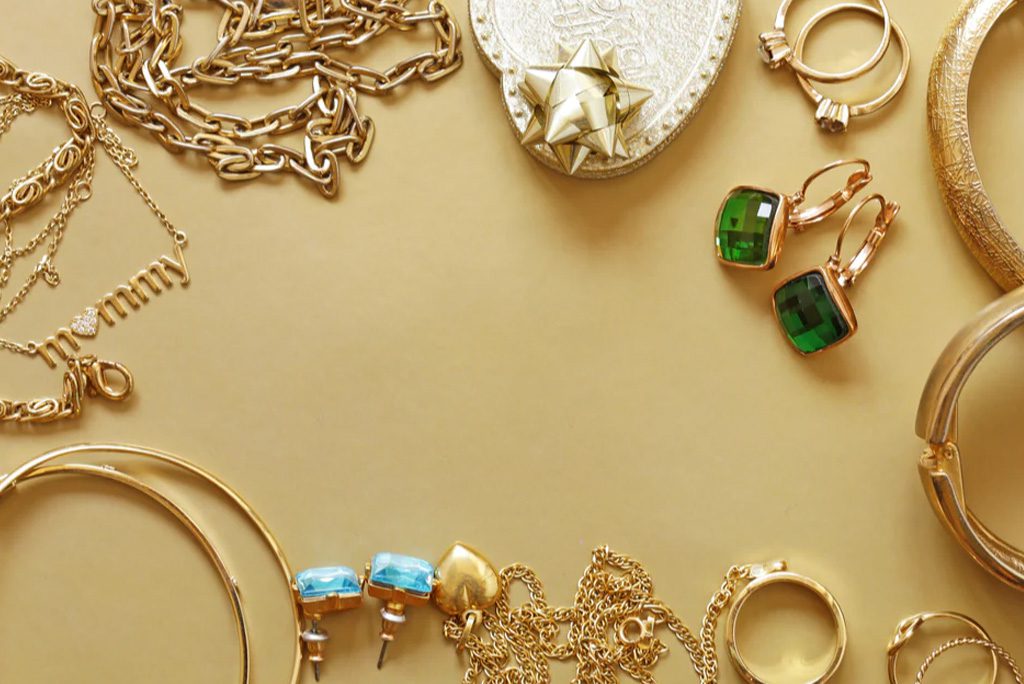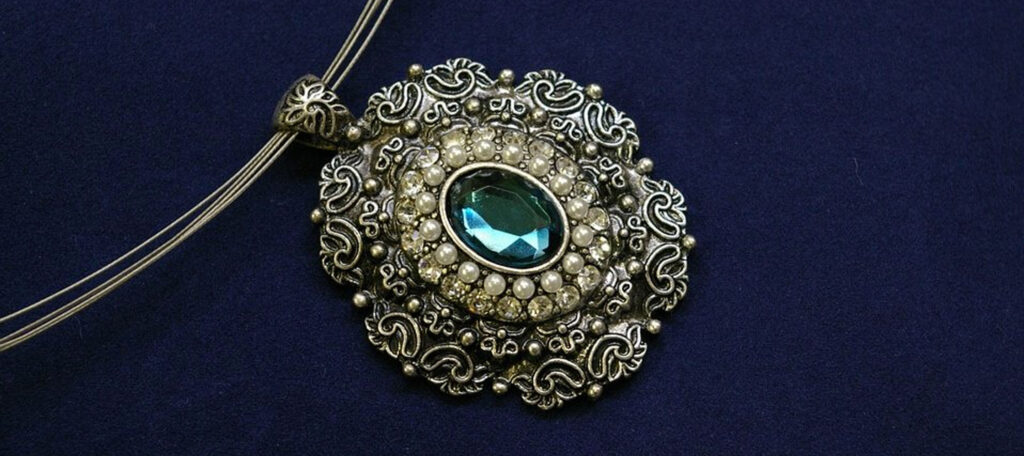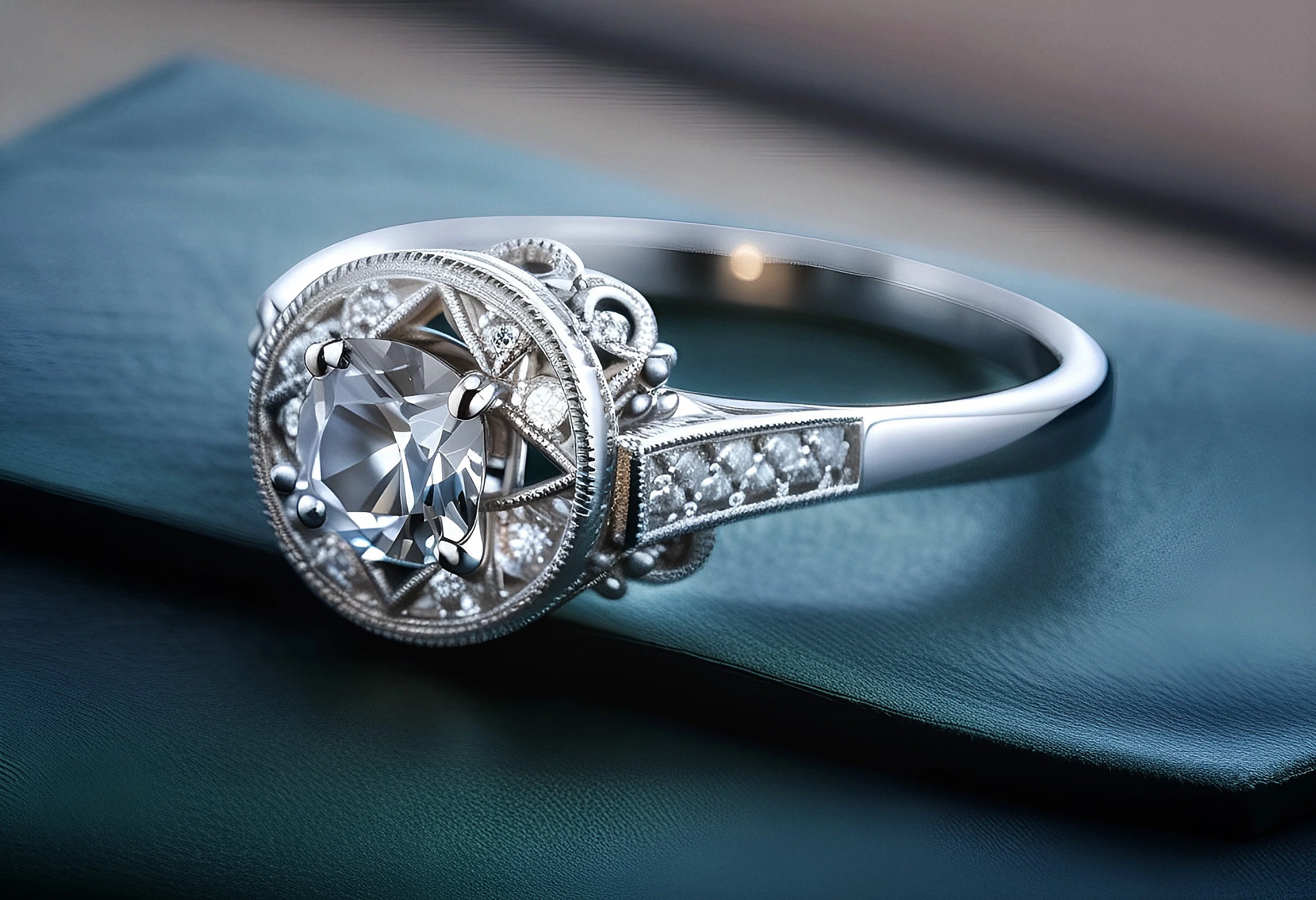Are you fascinated by the allure of vintage and antique jewelry? These timeless pieces carry stories from the past, each gem and setting a whisper of bygone eras.
If you’ve ever been enchanted by the elegance of these unique treasures, you’re not alone.
Let’s dive into the captivating world of vintage and antique jewelry, exploring their history, the difference between the two, and why they continue to charm jewelry enthusiasts today.

What is Vintage Jewelry?
Defining Vintage
Vintage jewelry refers to pieces that are at least 20-30 years old but not yet 100 years old.
These items often reflect the fashion trends and cultural nuances of their time, making them beautiful relics of the past.
Popular Eras of Vintage Jewelry
The Retro Era (1935-1950)
Post-World War II, the Retro Era brought bold, eye-catching designs.
Think large, colorful gemstones and chunky gold pieces.
This was a time of optimism and glamour, and the jewelry reflected that exuberance.
The Mid-Century Era (1950-1970)
This period saw a mix of traditional and modern styles. Sleek, minimalist designs coexisted with more elaborate and ornate pieces.
Pearls, diamonds, and innovative use of synthetic materials became popular.
What is Antique Jewelry?
Defining Antique
Antique jewelry is defined as pieces that are over 100 years old. These treasures are often rarer and more valuable due to their age and the craftsmanship involved.
Distinctive Eras of Antique Jewelry
The Georgian Era (1714-1837)
Jewelry from the Georgian era is extremely rare and highly prized. Pieces were often handmade with intricate designs and featured precious gemstones like diamonds, sapphires, and emeralds.
The Victorian Era (1837-1901)
Named after Queen Victoria, this era is known for its romantic and sentimental jewelry.
Lockets, brooches, and rings often contained hair or portraits of loved ones. Popular materials included gold, enamel, and gemstones.
The Edwardian Era (1901-1915)
Characterized by delicate designs and the extensive use of platinum, Edwardian jewelry often featured filigree work and lace-like patterns.
Diamonds and pearls were the gemstones of choice, reflecting the elegance of the time.
The Difference Between Vintage and Antique Jewelry
Age and Historical Context
The primary difference lies in their age. Vintage jewelry is younger, while antique jewelry has crossed the century mark.
This distinction affects their historical context and the styles they represent.
Design and Craftsmanship
Antique pieces often exhibit handcraftsmanship and intricate designs that are hard to replicate.
Vintage jewelry, while also exquisitely crafted, may incorporate modern manufacturing techniques and materials.
Value and Rarity
Due to their age and scarcity, antique jewelry pieces tend to be more valuable and sought after by collectors.
Vintage jewelry can also be valuable, especially if it represents a notable designer or era.
Why Vintage and Antique Jewelry Remains Popular
Unique and Individualistic
In a world of mass-produced items, vintage and antique jewelry stands out for its uniqueness.
Each piece has a distinct character and story, making it a perfect choice for those who value individuality.
Superior Craftsmanship
The craftsmanship of older jewelry often surpasses modern pieces.
The attention to detail and the use of high-quality materials result in pieces that are not only beautiful but also durable.
Historical and Sentimental Value
Wearing vintage or antique jewelry is like wearing a piece of history.
These pieces have witnessed significant events and eras, and they carry a sentimental value that new jewelry cannot match.

Collecting Vintage and Antique Jewelry
Starting Your Collection
Research and Education
Before starting your collection, educate yourself about different eras, styles, and materials.
Understanding the history and significance of pieces will help you make informed decisions.
Authenticity and Provenance
Ensure that the jewelry you purchase is authentic.
Provenance, or the history of ownership, adds value and context to the piece.
Reputable dealers and appraisers can provide certificates of authenticity.
Where to Buy
Antique Shops and Fairs
Antique shops and fairs are great places to find unique pieces.
You can often negotiate prices and learn more about the items from knowledgeable sellers.
Online Marketplaces
Many online platforms specialize in vintage and antique jewelry.
Ensure that you buy from reputable sellers and read reviews before making a purchase.
Caring for Vintage and Antique Jewelry
Proper Storage
Store your jewelry in a dry, cool place away from direct sunlight.
Use soft pouches or lined jewelry boxes to prevent scratches and tarnishing.
Cleaning Tips
Gentle Cleaning
Clean your jewelry gently using a soft brush and mild soap.
Avoid harsh chemicals that can damage delicate materials and settings.
Professional Maintenance
For valuable or fragile pieces, seek professional cleaning and maintenance.
Jewelers can safely clean and inspect your jewelry for any needed repairs.
Incorporating Vintage and Antique Jewelry into Modern Fashion
Mix and Match
Don’t be afraid to mix vintage and antique pieces with modern outfits.
A vintage brooch can add character to a contemporary dress, and antique earrings can provide a unique contrast to casual wear.
Statement Pieces
Use your vintage and antique jewelry as statement pieces. Let them be the focal point of your outfit, and keep other accessories minimal to highlight their beauty.
Everyday Elegance
Incorporate subtle vintage or antique items into your daily wardrobe for a touch of elegance.
A simple antique ring or a pair of vintage stud earrings can elevate your everyday style.
The Investment Potential of Vintage and Antique Jewelry
Appreciating Assets
Vintage and antique jewelry can be a good investment. Their value often appreciates over time, especially for rare and high-quality pieces.
Market Trends
Stay informed about market trends. Certain eras or styles may become more popular, increasing the value of your collection.
Insurance and Appraisals
Consider getting your valuable pieces appraised and insured. This ensures that you are protected in case of loss, theft, or damage.
Conclusion
The charm of vintage and antique jewelry lies in its unique blend of history, craftsmanship, and beauty.
These pieces are not just accessories; they are tangible links to the past, each with its own story to tell.
Whether you are a seasoned collector or a curious beginner, exploring the world of vintage and antique jewelry is a rewarding journey.
So go ahead, unlock the charm of these timeless treasures and add a touch of elegance to your life.

FAQs
1. How can I tell if a piece of jewelry is truly antique?
Authentic antique jewelry often has hallmarks or maker’s marks that indicate its origin and age. Consulting with a reputable appraiser or jeweler can help verify authenticity.
2. Is vintage jewelry more affordable than antique jewelry?
Generally, vintage jewelry can be more affordable than antique pieces, but prices vary based on the era, designer, and materials used. Rare or designer vintage pieces can be quite valuable.
3. Can vintage and antique jewelry be worn every day?
Yes, but with care. Avoid exposing your jewelry to harsh chemicals or environments that could damage it. Proper storage and gentle cleaning will help maintain its condition.
4. What should I look for when buying vintage jewelry online?
Look for detailed descriptions and clear photos. Check for authenticity certificates and read reviews about the seller. It’s also helpful to understand return policies in case the piece doesn’t meet your expectations.
5. How can I incorporate vintage jewelry into my modern wardrobe?
Start with small, versatile pieces like rings or earrings. Mix and match with contemporary clothing to create a unique, stylish look. Statement pieces can be used for special occasions to add a touch of vintage glamour.
